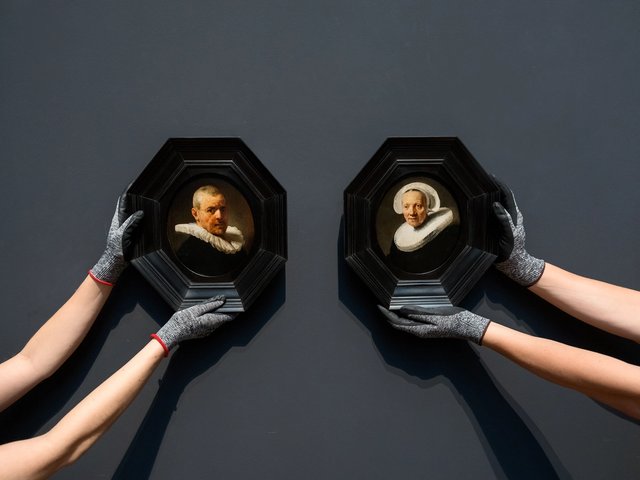Saul and David—a painting once thought to be one of Rembrandt’s greatest pictures until it was dismissed in 1969 as a work by a follower—has been reattributed to the Dutch master following a lengthy investigation. The Hague’s Mauritshuis revealed the news today, 9 June, in the run-up to the opening of an exhibition detailing the painting’s extensive technical investigation and recent restoration. The CSI-style show is due to open on 11 June and run until 13 September.
The investigation showed that the painting was painted in two phases: from around 1651 to 1654 and from 1655 to 1658. The picture’s large format and modeling corresponds to the artist’s early 1650s works. Identifying Rembrandt as the author of the second phase proved more difficult as there were areas of heavy restoration, especially around Saul’s face and hands. The examination also confirmed that the red curtain, a detail that had perplexed scholars, was original to the composition.
“For eight years, a large team of international experts has contributed to the research. A wide range of trusted and innovative research techniques have been employed. The result is significant: the Mauritshuis has one of its most famous Rembrandts back,” said Emilie Gordenker, the museum’s director, in a statement.
The Dutch art historian and leading expert on Rembrandt Ernst van de Wetering, who was on the museum’s independent advisory committee, told the New York Times that the picture is “a rare history painting from Rembrandt’s middle period”.
The technology employed in the examination, including automatic thread count analysis and macro X-ray fluorescence analysis, is cutting edge, but how the museum is presenting the results to the public is equally high-tech. A three-dimensional print, created in collaboration with the Delft University of Technology, shows how the picture may have originally looked. Touch screens, iPads and time-lapse films are also being used to shed light on the history of the painting, which was subjected to several unusual and puzzling interventions over the years including being cut in half and pieced back together. “It’s really criminal what happened to this painting,” Gordenker said.
• Rembrandt? The Case of Saul and David, Mauritshuis, The Hague, 11 June-13 September




